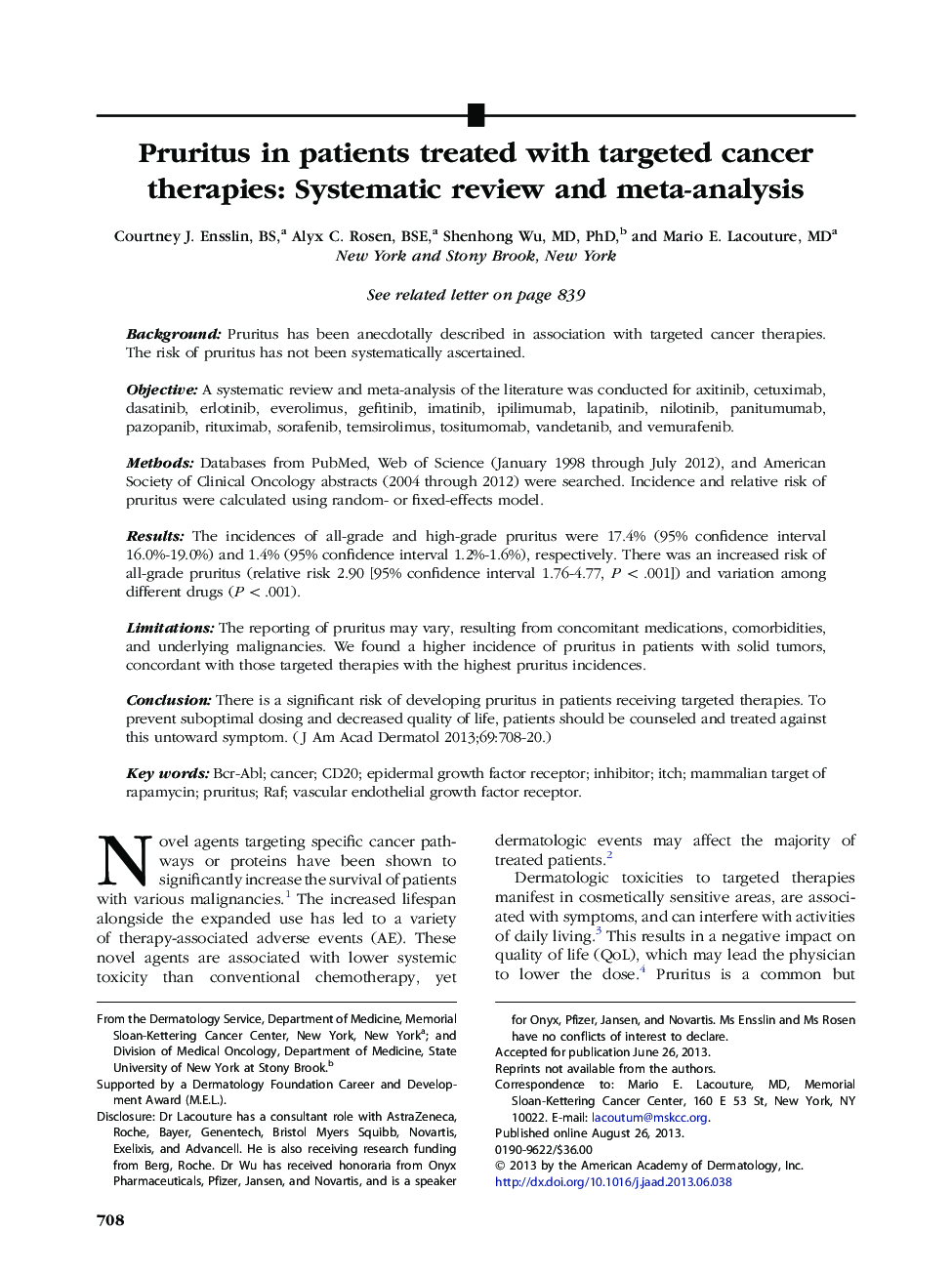| Article ID | Journal | Published Year | Pages | File Type |
|---|---|---|---|---|
| 3205314 | Journal of the American Academy of Dermatology | 2013 | 13 Pages |
BackgroundPruritus has been anecdotally described in association with targeted cancer therapies. The risk of pruritus has not been systematically ascertained.ObjectiveA systematic review and meta-analysis of the literature was conducted for axitinib, cetuximab, dasatinib, erlotinib, everolimus, gefitinib, imatinib, ipilimumab, lapatinib, nilotinib, panitumumab, pazopanib, rituximab, sorafenib, temsirolimus, tositumomab, vandetanib, and vemurafenib.MethodsDatabases from PubMed, Web of Science (January 1998 through July 2012), and American Society of Clinical Oncology abstracts (2004 through 2012) were searched. Incidence and relative risk of pruritus were calculated using random- or fixed-effects model.ResultsThe incidences of all-grade and high-grade pruritus were 17.4% (95% confidence interval 16.0%-19.0%) and 1.4% (95% confidence interval 1.2%-1.6%), respectively. There was an increased risk of all-grade pruritus (relative risk 2.90 [95% confidence interval 1.76-4.77, P < .001]) and variation among different drugs (P < .001).LimitationsThe reporting of pruritus may vary, resulting from concomitant medications, comorbidities, and underlying malignancies. We found a higher incidence of pruritus in patients with solid tumors, concordant with those targeted therapies with the highest pruritus incidences.ConclusionThere is a significant risk of developing pruritus in patients receiving targeted therapies. To prevent suboptimal dosing and decreased quality of life, patients should be counseled and treated against this untoward symptom.
